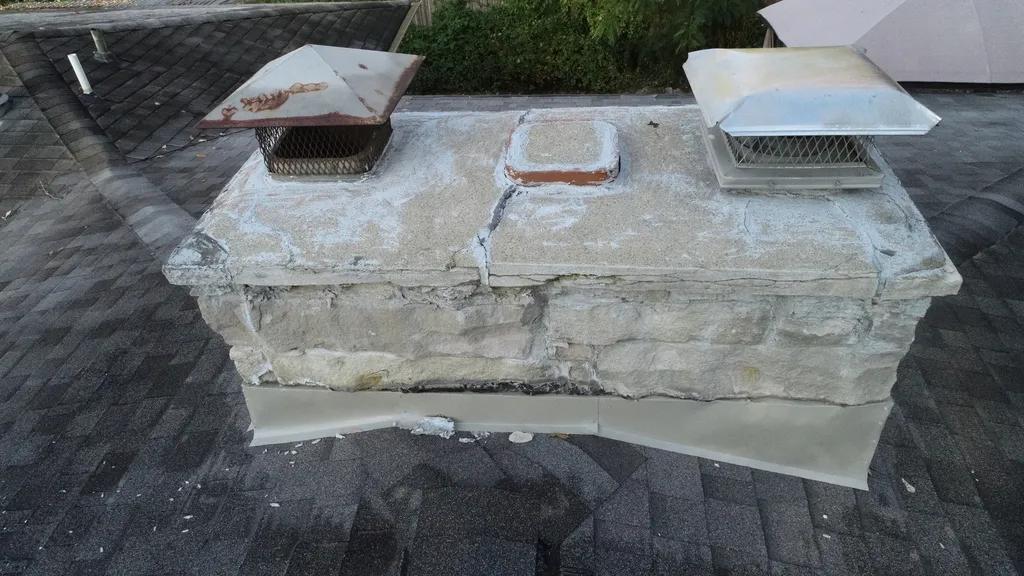Chimneys are meant to safely ventilate smoke and gases from your home, but when they leak water, it can lead to costly damages and potential safety hazards. In this article, we will explore some of the most common causes of chimney water leaks and provide valuable insights on how to address and prevent them. Understanding these issues can help homeowners safeguard their properties and maintain the integrity of their chimneys for years to come.
Table of Contents
- Common Signs of Chimney Water Leaks
- Potential Damage Caused by Water Leaks
- Main Causes of Chimney Water Leaks
- Effective Prevention and Repair Solutions
- Q&A
- Insights and Conclusions

Common Signs of Chimney Water Leaks
Water leaks in chimneys can be a common issue for homeowners, causing damage and potential safety hazards if left untreated. There are several common causes of chimney water leaks that homeowners should be aware of:
- Cracked Crown: The crown of the chimney is a concrete slab that sits at the top. If it becomes cracked, water can seep into the chimney and cause leaks.
- Leaky Flashing: Flashing is the metal strips that seal the joint between the chimney and the roof. If the flashing becomes loose or damaged, water can penetrate the chimney.
- Damaged Chimney Cap: The chimney cap is designed to prevent water from entering the chimney. If it is damaged or missing, water can easily get in.
Regular inspection and maintenance of the chimney can help prevent water leaks and ensure the safety of your home. Addressing these common causes promptly can help avoid costly repairs down the road.

Potential Damage Caused by Water Leaks
Water leaks in chimneys can cause a variety of potential damages to a home. One common cause of chimney water leaks is a damaged or missing chimney cap. The chimney cap plays a crucial role in protecting the chimney from water infiltration. Without a properly functioning chimney cap, rainwater can easily enter the chimney and cause damage to the interior of the structure.
Another common cause of chimney water leaks is cracked or deteriorating chimney flashing. Chimney flashing is the metal strips that seal the gap between the chimney and the roof. When the flashing becomes damaged, water can seep into the chimney, causing water leaks and potentially damaging the roof and surrounding areas.

Main Causes of Chimney Water Leaks
Water leaks in chimneys can be a common issue that homeowners face, causing damage to both the chimney structure and interior of the home. There are several that should be addressed to prevent further damage.
One common cause of chimney water leaks is a damaged or missing chimney cap. A chimney cap is designed to prevent water from entering the chimney flue while also keeping out debris and animals. If the chimney cap is damaged or missing, water can easily seep into the chimney, causing leaks. Another common cause is deteriorated chimney flashing. Chimney flashing is the metal material that seals the joint between the chimney and the roof. If the flashing is old or damaged, water can penetrate the seal and leak into the home. It is important to regularly inspect and maintain the chimney cap and flashing to prevent water leaks.

Effective Prevention and Repair Solutions
A leaking chimney can cause significant damage to your home if not addressed promptly. There are several common causes of chimney water leaks that homeowners should be aware of:
- Cracked or deteriorating chimney crown: The chimney crown is a concrete slab that sits on top of the chimney. If it is cracked or deteriorating, water can seep through and into the chimney.
- Missing or damaged chimney flashing: Chimney flashing is the metal strip that covers the joint between the chimney and roof. If it is missing or damaged, water can easily enter the home.
- Cracked chimney bricks: Cracked chimney bricks can allow water to seep into the chimney and leak into the home.
| Cracked or deteriorating chimney crown |
| Missing or damaged chimney flashing |
| Cracked chimney bricks |
Q&A
Q: What are some common causes of chimney water leaks?
A: There are several common causes of chimney water leaks, including damaged or missing chimney caps, deteriorated mortar joints, cracked chimney crowns, and damaged flashing.
Q: How do damaged or missing chimney caps contribute to water leaks?
A: Damaged or missing chimney caps can allow water to enter the chimney structure, leading to leaks and potentially causing damage to the interior of the chimney.
Q: What role do deteriorated mortar joints play in chimney water leaks?
A: Deteriorated mortar joints can allow water to seep into the chimney, leading to leaks and potentially causing damage to the chimney structure over time.
Q: Why is a cracked chimney crown a common cause of water leaks?
A: A cracked chimney crown can allow water to seep into the chimney structure, leading to leaks and potentially causing damage to the interior of the chimney.
Q: How does damaged flashing contribute to chimney water leaks?
A: Damaged flashing can allow water to enter the chimney structure at the intersection of the roof and the chimney, leading to leaks and potentially causing damage to the interior of the chimney.
Insights and Conclusions
In conclusion, it is crucial to address common causes of chimney water leaks promptly to prevent potential structural damage and safety hazards. By identifying and addressing issues such as damaged flashing, deteriorated masonry, or chimney crown damage, homeowners can ensure their chimneys remain leak-free and functioning properly. Regular inspections and maintenance by qualified professionals can help detect and resolve these issues before they escalate. Remember, a well-maintained chimney is essential for the safety and efficiency of your home’s heating system. Stay informed, stay vigilant, and protect your chimney from water leaks.


